Your cart is currently empty!
Tag: Age
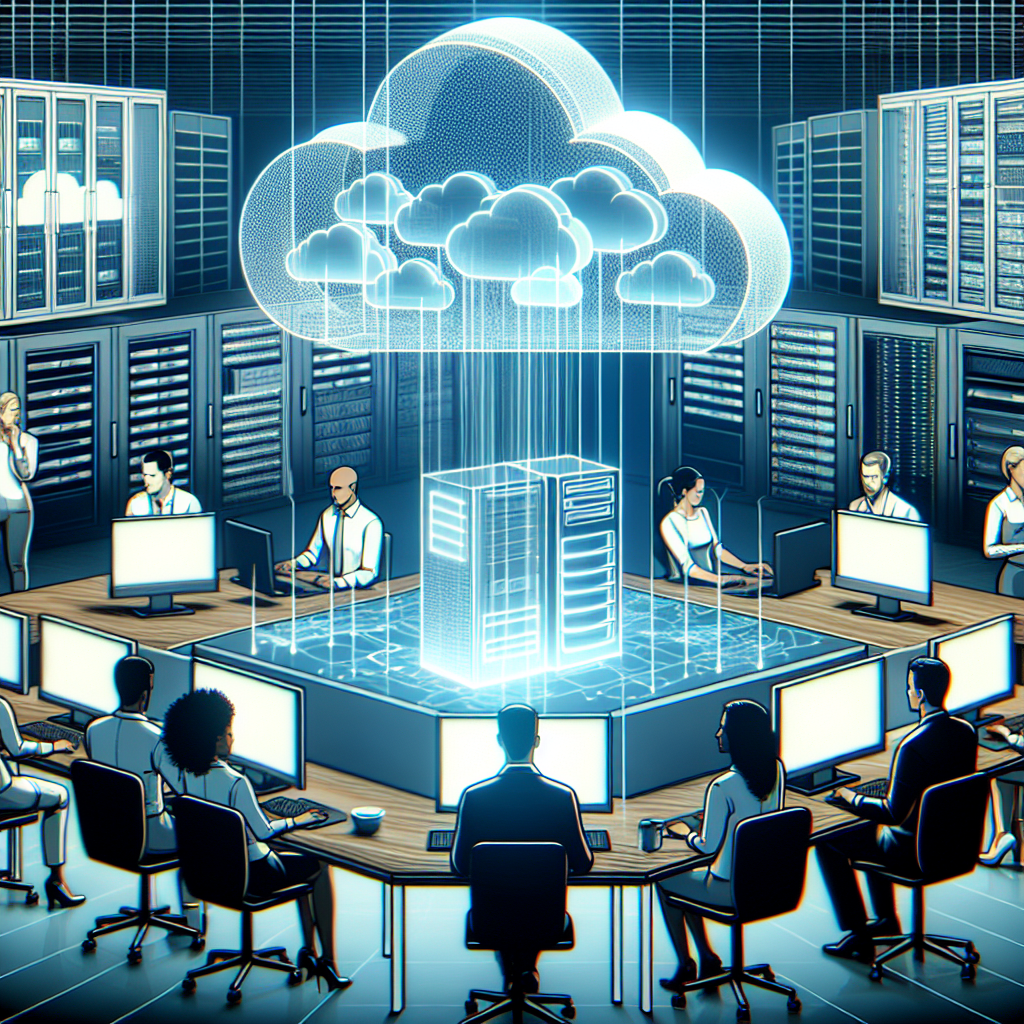
The Evolving Role of IT Infrastructure Managers in the Age of Cloud Computing
As technology continues to advance at a rapid pace, the role of IT infrastructure managers is evolving to keep up with the changes. One of the biggest shifts in recent years has been the widespread adoption of cloud computing, which has revolutionized the way businesses store, manage, and access their data. As a result, IT infrastructure managers are being tasked with new responsibilities and challenges in order to effectively navigate this new landscape.Cloud computing has fundamentally changed the way IT infrastructure is managed. Instead of relying on physical servers and hardware, businesses are now able to store their data and applications in the cloud, allowing for more flexibility, scalability, and cost savings. This shift has forced IT infrastructure managers to adapt to a new set of skills and responsibilities.
In the age of cloud computing, IT infrastructure managers are now responsible for overseeing a hybrid environment that includes both on-premises and cloud-based systems. This means they must have a deep understanding of both traditional infrastructure technologies and cloud services in order to effectively manage and optimize their organization’s IT resources.
Additionally, IT infrastructure managers must now also focus on security and compliance in the cloud. With sensitive data being stored off-site, it is crucial for IT infrastructure managers to implement robust security measures to protect against cyber threats and ensure compliance with industry regulations.
Another key aspect of the evolving role of IT infrastructure managers in the age of cloud computing is the need for effective communication and collaboration with other departments within the organization. With cloud services being used by various teams and departments, IT infrastructure managers must work closely with stakeholders to ensure that the organization’s IT infrastructure meets the needs of the business as a whole.
Overall, the role of IT infrastructure managers is becoming increasingly complex and multifaceted in the age of cloud computing. In order to be successful in this evolving landscape, IT infrastructure managers must possess a diverse skill set that includes technical expertise, security knowledge, and strong communication and collaboration skills. By staying informed and adapting to the changes brought about by cloud computing, IT infrastructure managers can continue to effectively manage and optimize their organization’s IT infrastructure in the digital age.

The Role of Technical Support in Today’s Digital Age
In today’s fast-paced digital age, technology plays a crucial role in every aspect of our lives. From communication to entertainment, shopping to banking, we rely heavily on various devices and software to make our daily tasks easier and more efficient. However, with the increasing complexity of technology, issues and problems are bound to arise. This is where technical support comes in.Technical support has become an essential service in today’s digital age. It provides assistance and solutions to users who encounter technical issues with their devices or software. Whether it’s a computer, smartphone, tablet, or any other electronic device, technical support teams are there to help users troubleshoot and resolve any problems they may face.
One of the key roles of technical support is to provide timely and effective assistance to users. When a user encounters an issue, they often need immediate help to get back to using their device or software. Technical support teams are trained to quickly diagnose the problem and provide solutions to resolve it as efficiently as possible. This helps users avoid any downtime and ensures that they can continue using their devices without any interruptions.
Another important role of technical support is to educate users about how to use their devices and software effectively. Many users may not be familiar with the technical aspects of their devices and may struggle to troubleshoot problems on their own. Technical support teams can provide guidance and tips on how to use their devices properly, as well as how to prevent common technical issues from occurring in the future.
In addition, technical support plays a vital role in ensuring the security and privacy of users’ data. With cyber threats and data breaches becoming more common, it’s essential for users to have access to reliable technical support to help them protect their personal information. Technical support teams can provide guidance on how to secure devices and software, as well as how to recognize and avoid potential security threats.
Overall, the role of technical support in today’s digital age is crucial in helping users navigate the complexities of technology. From providing timely assistance and solutions to educating users and ensuring their security, technical support teams play a vital role in helping users make the most of their devices and software. As technology continues to evolve and become more integrated into our daily lives, the need for reliable and efficient technical support will only continue to grow.

Disaster Recovery in the Digital Age: Strategies for Protecting Data and Systems
In today’s digital age, where businesses rely heavily on technology to operate, disaster recovery planning has become more important than ever. With the increasing frequency of cyber attacks, natural disasters, and other disruptions, it is crucial for organizations to have strategies in place to protect their data and systems.Disaster recovery refers to the processes and procedures that an organization puts in place to ensure that its IT infrastructure can quickly recover and resume normal operations after a disaster. This includes not only backing up data, but also having plans in place for restoring systems, applications, and networks in the event of a disruption.
One of the key strategies for protecting data and systems in the digital age is to regularly back up critical data. This means making copies of important files, databases, and applications and storing them in a secure location, either on-site or in the cloud. By backing up data regularly, organizations can minimize the risk of data loss in the event of a disaster.
Another important strategy is to implement robust security measures to protect against cyber attacks. This includes using firewalls, antivirus software, and encryption to safeguard data from unauthorized access. It is also important to regularly update software and systems to patch vulnerabilities and prevent security breaches.
In addition to backing up data and implementing security measures, organizations should also develop a comprehensive disaster recovery plan that outlines the steps to take in the event of a disruption. This plan should include details on how to restore systems, applications, and networks, as well as who is responsible for carrying out each task.
Testing the disaster recovery plan regularly is also crucial to ensure that it will work effectively when needed. By conducting mock drills and simulations, organizations can identify any weaknesses in their plan and make necessary adjustments to improve their readiness for a disaster.
Overall, disaster recovery planning is essential for protecting data and systems in the digital age. By implementing strategies such as regular data backups, robust security measures, and a comprehensive disaster recovery plan, organizations can minimize the impact of disruptions and ensure that they can quickly recover and resume normal operations in the event of a disaster.
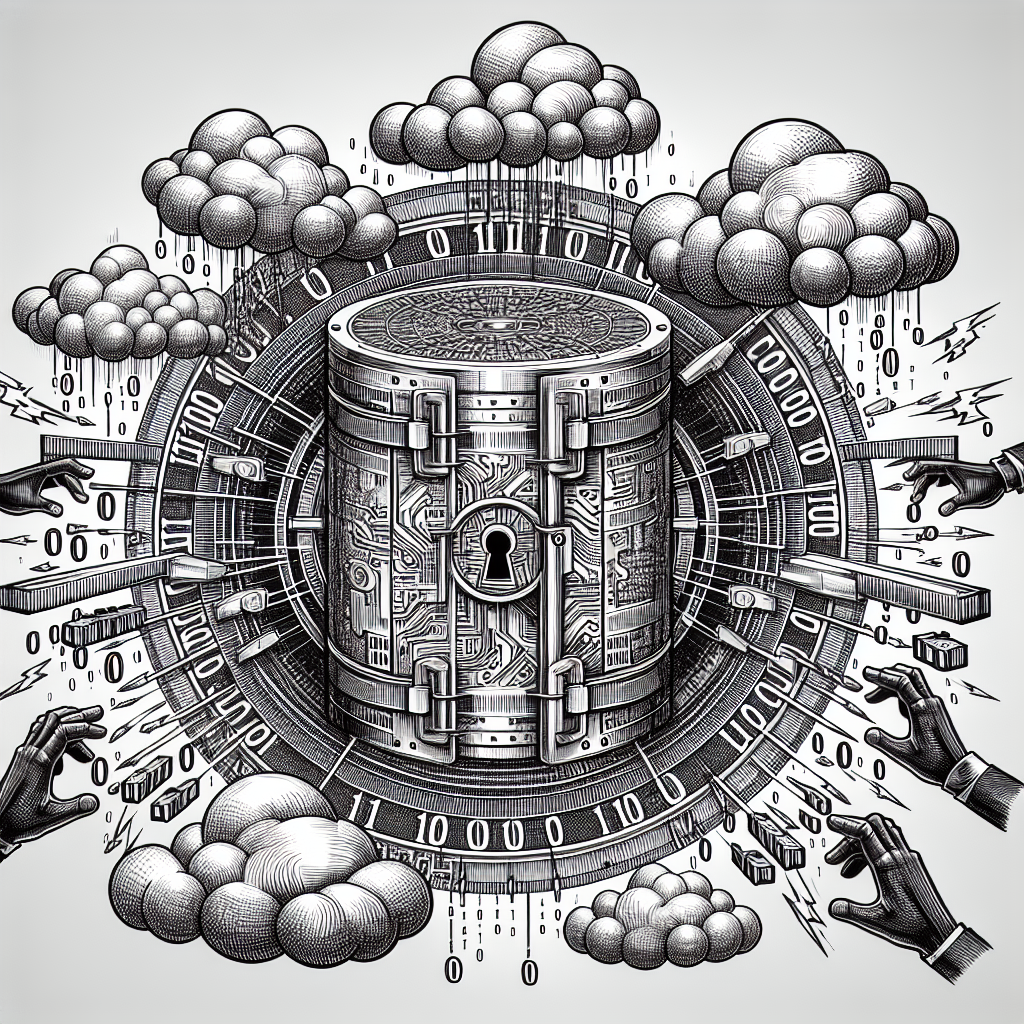
Cybersecurity in the Digital Age: Strategies for Safeguarding Your Data
In today’s digital age, cybersecurity has become more important than ever. With the increasing amount of sensitive data being stored and transmitted online, it is crucial for individuals and organizations to take steps to protect their information from cyber threats.One of the first steps in safeguarding your data is to ensure that you have strong passwords in place for all of your online accounts. This means using a combination of letters, numbers, and special characters, and avoiding easily guessable passwords such as “password” or “123456.” It is also important to change your passwords regularly and use different passwords for each account to prevent hackers from gaining access to multiple accounts if one is compromised.
Another important aspect of cybersecurity is keeping your software and devices up to date. Software updates often include security patches that fix vulnerabilities that hackers could exploit to gain access to your data. It is important to regularly check for updates and install them as soon as they become available to protect your devices and data.
Additionally, it is important to be cautious when clicking on links or downloading attachments in emails or messages from unknown sources. Phishing attacks, where hackers attempt to trick individuals into providing sensitive information, are becoming increasingly common. By being vigilant and avoiding clicking on suspicious links or downloading attachments from unknown sources, you can help protect your data from being compromised.
In addition to these strategies, it is also important to use encryption to protect your data when transmitting it online. Encryption scrambles your data so that only authorized individuals can access it, making it more difficult for hackers to intercept and steal your information. Many websites and online services offer encryption options, so be sure to enable encryption whenever possible to safeguard your data.
Overall, cybersecurity is an essential aspect of protecting your data in the digital age. By implementing strong passwords, keeping your software up to date, being cautious when clicking on links or downloading attachments, and using encryption to protect your data, you can help ensure that your sensitive information remains secure online. By taking these steps, you can safeguard your data and reduce the risk of falling victim to cyber threats.
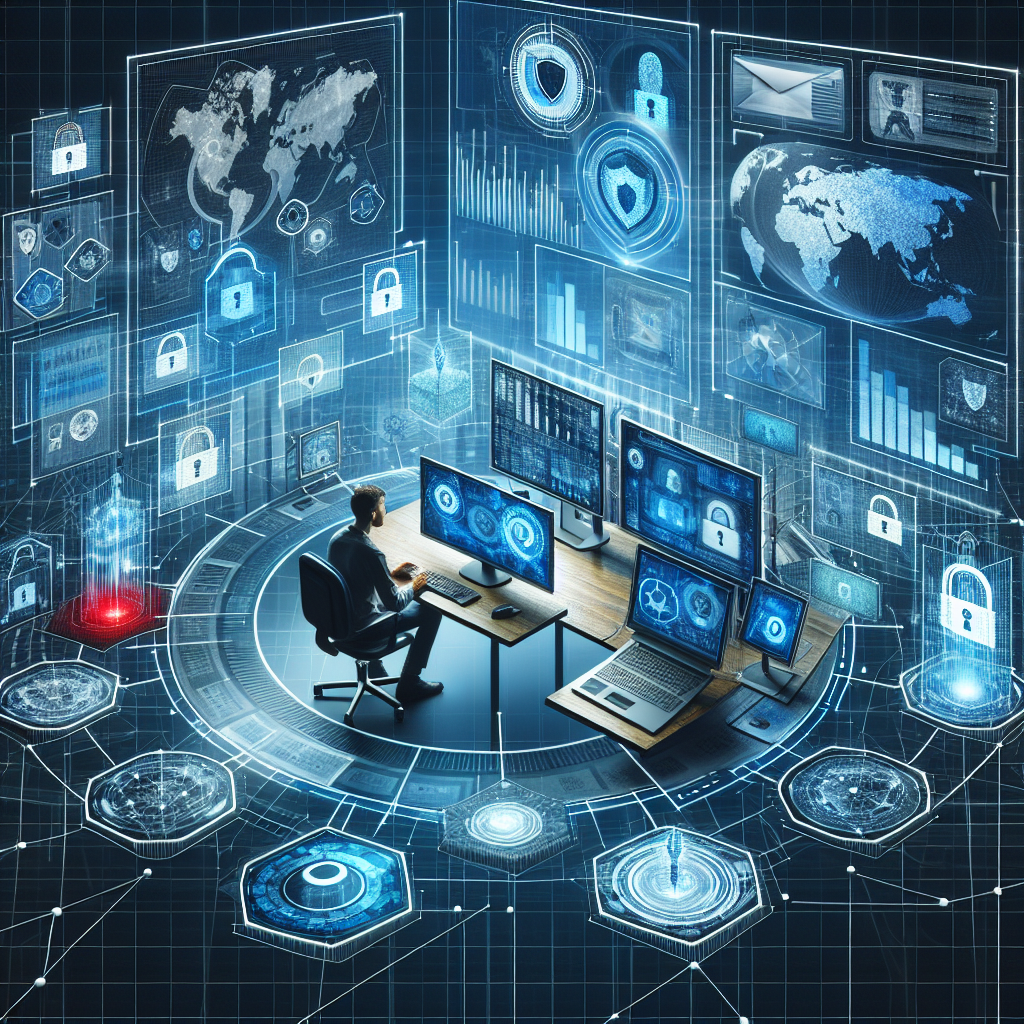
Remote Monitoring in the Digital Age: Navigating Privacy and Data Security Concerns
In the digital age, remote monitoring has become increasingly popular as more and more companies and individuals rely on technology to track and monitor various aspects of their lives. From monitoring employees’ productivity to tracking health and fitness data, remote monitoring offers convenience and efficiency. However, as with any technology, there are concerns about privacy and data security that must be navigated.One of the biggest concerns surrounding remote monitoring is the potential invasion of privacy. With the ability to track and monitor individuals’ every move, there is a fear that this information could be misused or exploited. For example, employers monitoring their employees’ productivity could lead to a lack of trust and a feeling of constant surveillance. Additionally, tracking personal health data could potentially be used against individuals by insurance companies or employers.
To address these privacy concerns, it is important for companies and individuals to be transparent about the data they are collecting and how it will be used. Clear communication and consent from all parties involved are essential to ensuring that remote monitoring is being used ethically and responsibly. Companies should also implement strict security measures to protect the data being collected, such as encryption and secure storage methods.
Data security is another major concern when it comes to remote monitoring. With the increasing amount of data being collected and stored, there is a risk of this information being compromised or hacked. This could lead to sensitive information being exposed and potentially used for malicious purposes.
To mitigate these risks, companies should invest in robust cybersecurity measures and regularly update their systems to protect against potential threats. Additionally, individuals should take steps to protect their own data, such as using strong passwords and being cautious about sharing personal information online.
Overall, remote monitoring offers many benefits in terms of convenience and efficiency, but it is important to be mindful of the privacy and data security concerns that come with it. By being transparent about data collection and usage, implementing strong security measures, and being proactive about protecting personal information, we can navigate these concerns and continue to reap the benefits of remote monitoring in the digital age.

Cybersecurity Risks in the Age of Remote Work
With the rise of remote work due to the ongoing COVID-19 pandemic, cybersecurity risks have become a major concern for businesses and individuals alike. As more employees work from home, they are increasingly using personal devices and unsecured networks, making them more vulnerable to cyber attacks. In this article, we will discuss the cybersecurity risks in the age of remote work and provide tips on how to protect yourself and your organization.One of the biggest cybersecurity risks in the age of remote work is the use of personal devices for work-related tasks. While this may be convenient for employees, it also opens up a host of security vulnerabilities. Personal devices are often not as secure as company-issued devices, and may not have the latest security updates installed. This makes them more susceptible to malware and other cyber attacks.
Another major risk is the use of unsecured public Wi-Fi networks. Many employees are working from cafes, airports, or other public places where Wi-Fi networks are not secure. Hackers can easily intercept data transmitted over these networks, putting sensitive information at risk. It is important for employees to use a virtual private network (VPN) when connecting to public Wi-Fi networks to encrypt their data and protect their online activities.
Phishing attacks have also become more prevalent in the age of remote work. Hackers are sending out malicious emails pretending to be from reputable organizations in order to trick employees into revealing sensitive information or downloading malware onto their devices. It is important for employees to be vigilant and verify the authenticity of any emails before clicking on links or providing personal information.
To protect yourself and your organization from cybersecurity risks in the age of remote work, here are some tips to follow:
1. Use strong, unique passwords for all your accounts and enable two-factor authentication whenever possible.
2. Keep your devices and software up to date with the latest security patches.
3. Use a VPN when connecting to public Wi-Fi networks to encrypt your data.
4. Be cautious of emails from unknown senders and do not click on links or download attachments from suspicious emails.
5. Educate yourself and your employees about cybersecurity best practices and the importance of maintaining good security hygiene.
In conclusion, the rise of remote work has brought about new cybersecurity risks that need to be addressed. By following the tips outlined in this article, you can help protect yourself and your organization from falling victim to cyber attacks. Stay vigilant, stay informed, and stay safe in the age of remote work.
Remote Monitoring in the Age of COVID-19: Keeping Employees Safe and Productive
The COVID-19 pandemic has brought about many changes in the way we work, with remote monitoring becoming a crucial tool for keeping employees safe and productive. As businesses navigate the challenges of operating during a global health crisis, the need for remote monitoring solutions has become more apparent than ever before.Remote monitoring allows employers to keep track of their employees’ activities, regardless of where they are working from. This can be especially important in situations where employees are working from home, as it provides a way to ensure that they are staying on task and meeting deadlines. In addition, remote monitoring can help employers identify potential issues or concerns that may arise, such as cybersecurity threats or performance issues.
One of the key benefits of remote monitoring is the ability to keep employees safe during a time when social distancing and other safety measures are of utmost importance. By monitoring employee activities remotely, employers can minimize the need for in-person interactions and reduce the risk of exposure to the virus. This can help to protect employees and their families, as well as prevent the spread of COVID-19 within the workplace.
Remote monitoring can also help to improve employee productivity during these challenging times. By providing employers with real-time insights into employee activities, remote monitoring can help to identify areas where employees may be struggling and provide support or resources to help them succeed. This can be especially important in a remote work environment, where employees may be facing new challenges and distractions that can impact their performance.
In addition, remote monitoring can help to ensure that employees are complying with company policies and procedures, even when working remotely. This can help to maintain a sense of accountability and professionalism among employees, even when they are working from home. By monitoring employee activities, employers can also ensure that sensitive information is being handled securely and that company data is protected from potential threats.
Overall, remote monitoring is an essential tool for businesses looking to navigate the challenges of operating during the COVID-19 pandemic. By keeping employees safe and productive, remote monitoring can help businesses to weather the storm and emerge stronger on the other side. As we continue to adapt to the new normal of remote work, remote monitoring will play a crucial role in ensuring the safety and success of employees and businesses alike.
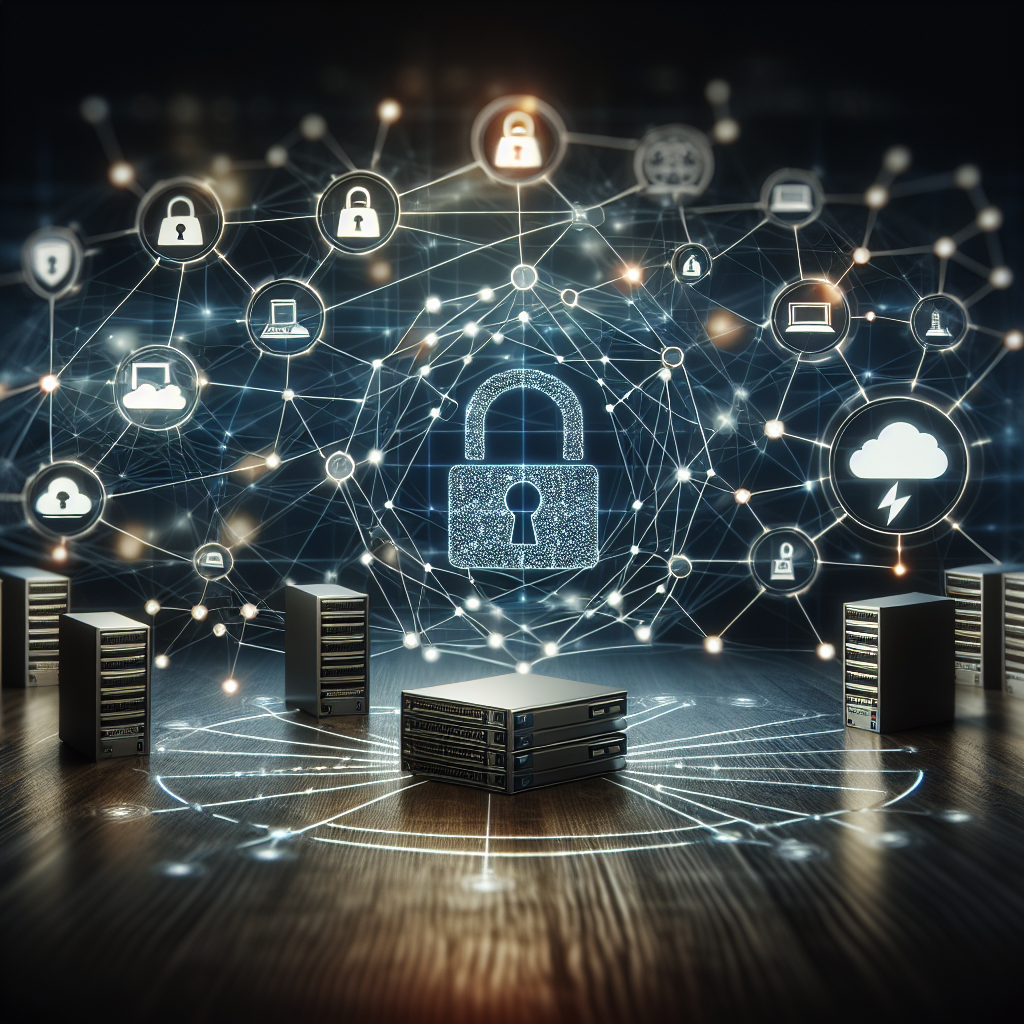
Cybersecurity in the Age of IT Solutions
In today’s digital age, cybersecurity has become a critical concern for businesses and individuals alike. With the rapid advancement of technology and the increasing reliance on IT solutions, the need for robust cybersecurity measures has never been greater.As more and more data is being stored and transmitted online, the risk of cyber attacks and data breaches has also increased. Hackers are constantly developing new and sophisticated ways to infiltrate networks and steal sensitive information, making it essential for organizations to implement comprehensive cybersecurity strategies.
One of the biggest challenges in the age of IT solutions is the sheer volume of data that needs to be protected. With the rise of cloud computing and the Internet of Things (IoT), organizations are generating and storing vast amounts of data that need to be secured from potential threats. This requires a multi-layered approach to cybersecurity, involving a combination of firewalls, encryption, access control, and regular security audits.
Another key aspect of cybersecurity in the age of IT solutions is the need for constant vigilance. Cyber threats are constantly evolving, and organizations need to stay one step ahead of hackers by regularly updating their security measures and staying informed about the latest trends in cybercrime. This requires a proactive approach to cybersecurity, with organizations investing in training for their employees and implementing best practices for data protection.
In addition to external threats, organizations also need to be mindful of internal risks. Insider threats, such as employees leaking sensitive information or falling victim to phishing scams, can pose a significant risk to cybersecurity. This highlights the importance of implementing robust access control measures and conducting regular security awareness training for employees.
Overall, cybersecurity in the age of IT solutions is a complex and ever-evolving challenge. With the right tools, technology, and strategies in place, organizations can mitigate the risk of cyber attacks and protect their valuable data. By investing in cybersecurity measures and staying vigilant, organizations can safeguard their digital assets and maintain the trust of their customers and stakeholders in today’s increasingly interconnected world.
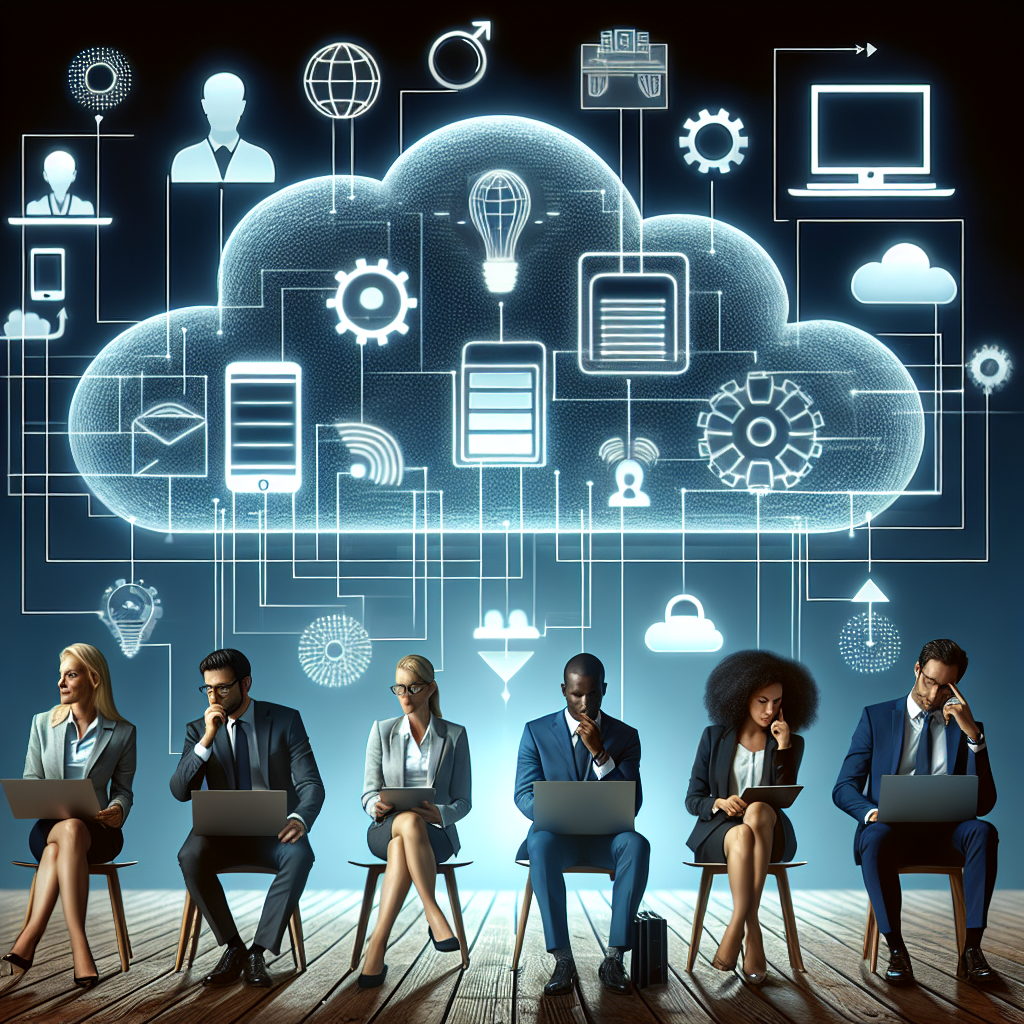
Cloud Computing in the Age of Remote Work: How Businesses are Adapting
Cloud computing has been a game-changer for businesses in recent years, allowing them to store, access, and manage their data and applications remotely through the internet. However, in the age of remote work brought on by the COVID-19 pandemic, cloud computing has become even more crucial for businesses looking to adapt to the new normal.With the rise of remote work, businesses have had to quickly shift their operations online, with employees working from home and relying on cloud-based tools and services to collaborate and communicate effectively. Cloud computing has enabled businesses to maintain productivity and efficiency, even when employees are not physically present in the office.
One of the key benefits of cloud computing in the age of remote work is its scalability and flexibility. Businesses can easily scale their cloud resources up or down based on their needs, allowing them to adapt to changing workloads and requirements. This flexibility is especially important in a remote work environment, where businesses may need to quickly ramp up their resources to support a sudden increase in demand.
Another advantage of cloud computing is its cost-effectiveness. By moving their data and applications to the cloud, businesses can reduce their IT infrastructure costs, as they no longer need to invest in expensive hardware and software. Instead, they can pay for cloud services on a subscription basis, only paying for what they use. This pay-as-you-go model is particularly beneficial for businesses in the current economic climate, where cost savings are more important than ever.
In addition to cost savings, cloud computing also offers businesses increased security and reliability. Cloud service providers invest heavily in security measures to protect their customers’ data, ensuring that it is safe from cyber threats and breaches. This level of security is especially important in a remote work environment, where employees are accessing company data from various locations and devices.
Overall, cloud computing has become a lifeline for businesses in the age of remote work, enabling them to adapt quickly and effectively to the new normal. By harnessing the scalability, flexibility, cost-effectiveness, and security of the cloud, businesses can continue to operate seamlessly and stay ahead of the curve in an increasingly digital world.

The Evolution of Help Desk Support in the Digital Age
Help desk support has come a long way since its inception. In the digital age, the way companies handle customer inquiries and technical issues has evolved significantly, thanks to advancements in technology and changes in consumer behavior.Gone are the days when help desk support meant waiting on hold for hours to speak to a representative, only to be transferred multiple times before finally getting an answer to your question. Today, help desk support is more efficient, accessible, and personalized than ever before.
One of the biggest changes in help desk support is the shift towards digital channels. With the rise of email, live chat, social media, and self-service portals, customers now have multiple options for reaching out to companies for assistance. This not only makes it easier for customers to get help but also allows companies to provide support around the clock, regardless of time zones or holidays.
Another major evolution in help desk support is the use of artificial intelligence (AI) and chatbots. These technologies can analyze customer inquiries, provide instant responses, and even troubleshoot technical issues without human intervention. This not only speeds up the resolution process but also frees up human agents to focus on more complex problems that require human empathy and critical thinking.
Furthermore, data analytics plays a crucial role in modern help desk support. By analyzing customer interactions and feedback, companies can identify trends, improve their products and services, and anticipate potential issues before they escalate. This proactive approach not only enhances the customer experience but also helps companies save time and resources in the long run.
Moreover, the concept of omnichannel support has become increasingly important in the digital age. Customers now expect a seamless experience across all communication channels, whether it’s over the phone, email, live chat, social media, or in-person. Companies that can provide consistent and personalized support across all touchpoints are more likely to earn customer loyalty and trust.
In conclusion, the evolution of help desk support in the digital age has transformed the way companies interact with their customers. By leveraging technology, data, and omnichannel strategies, companies can provide faster, more efficient, and more personalized support than ever before. As technology continues to advance, the future of help desk support is sure to bring even more innovations that will further enhance the customer experience.
